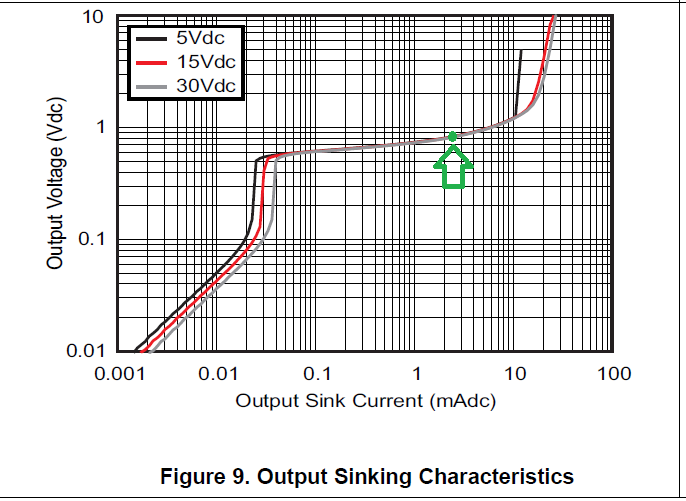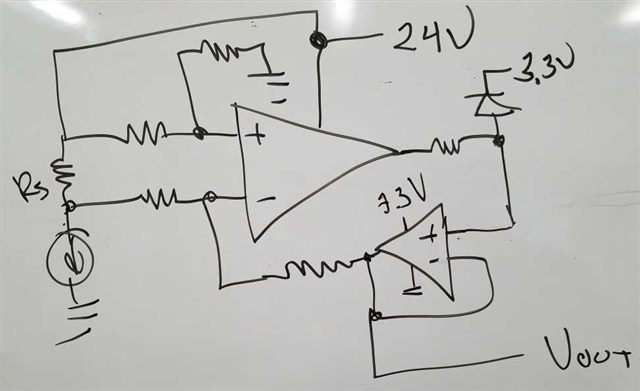Hi all,
I am using an LM358 to measure the differential voltage across a 0.1 ohm resistor that is functioning as a high side current monitor.
The schematic is below, but the .1 ohm resistor is not shown (it is located between the two inputs (+24VS and +24VS1)).
Initially there is no current flowing through the current sense resistor, which leaves both inputs essentially connected to the + rail. The voltage measured at the inputs is in fact exactly equal to the op amp positive supply voltage.
I believe this circuit satisfies the common mode voltage requirement of the chip because the voltage divider on the input causes the actual op amp inputs only see 21.8 volts which is 2.2 volts below the +24V supply voltage.
According to the spice models, the output of this circuit should be about 60 mV because that is as close as the op-amp can get to the negative supply voltage (which is ground in this case). However, what I am actually reading is 750-800 mV. I have removed all the capacitors and the output protection schottky diodes, they make no difference.
I am trying to find some explanation as to why the output voltage offset is so high when the inputs are both right at the plus supply rail.
The other strange thing is that the opamp is consuming roughly 22 mA and is getting slightly warm.
Any suggestions?
Thanks,
Don




